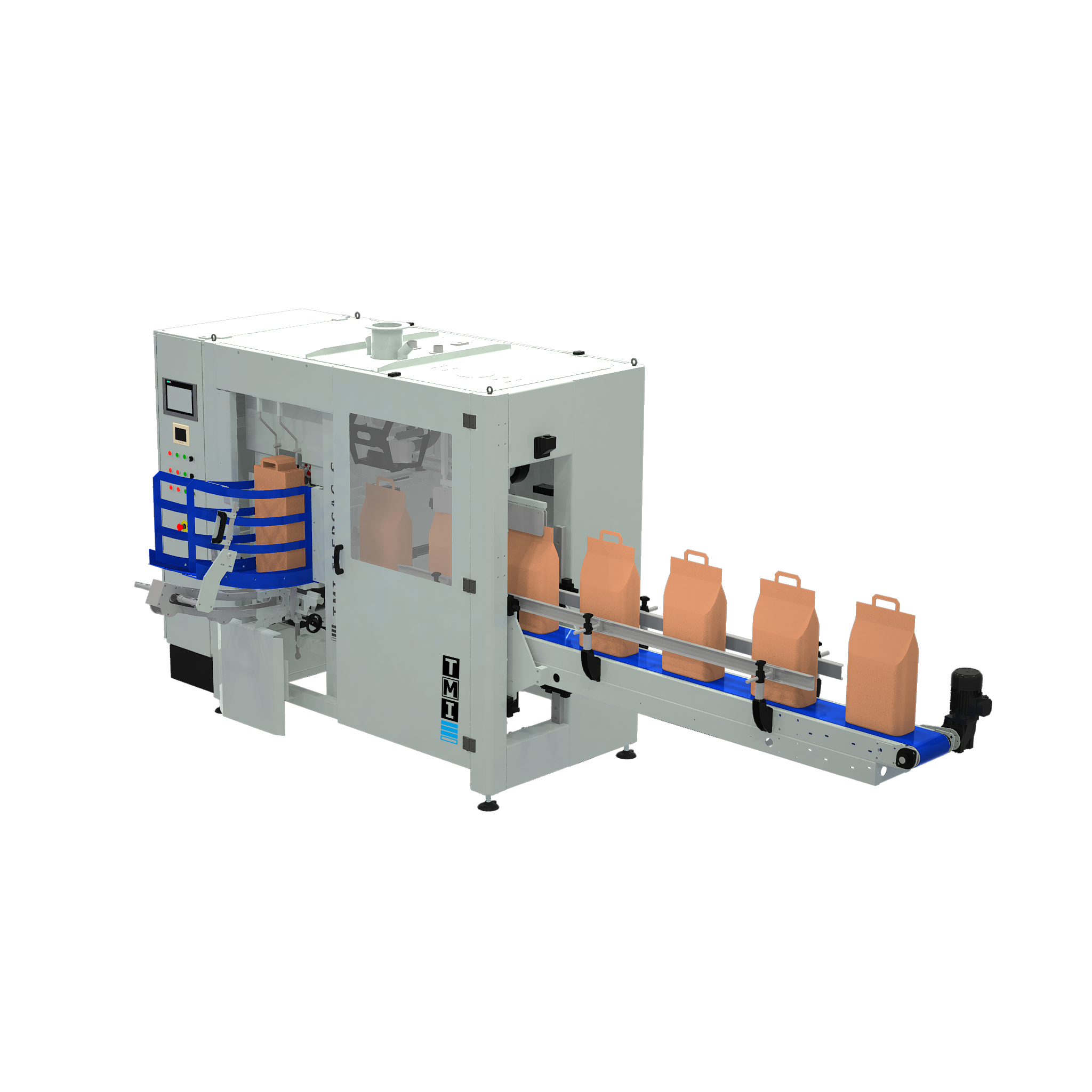Understanding Automatic Bagging Machines for SOS (Self-Opening System) Bags

Self-Opening System (SOS) bags, recognized for their convenience and distinct square-bottom design, are a staple in various industries for packaging goods ranging from food products to construction materials. An automatic bagging machine specifically designed for SOS bags automates the process of filling and sealing these unique containers, significantly boosting efficiency and consistency in packaging operations.
SOS bags feature a pre-applied adhesive strip or a specific construction that allows them to be opened easily, often with a simple pull tab or edge separation, eliminating the need for cutting tools. Automating the handling of these bags requires specialized equipment capable of managing their unique opening and filling characteristics.
1. The Automated SOS Bagging Process Explained
Automatic bagging machines for SOS bags streamline packaging through a precise sequence of operations. While designs vary, the fundamental workflow typically includes the following steps:
- Bag Loading and Feeding: The process begins with loading stacks or rolls of pre-formed SOS bags into the machine's magazine or hopper. A feeding mechanism then carefully picks and transfers one bag at a time to the filling station.
- SOS Bag Opening Activation: This is a critical step unique to SOS bags. The machine employs a specialized mechanism – often using vacuum cups, mechanical grippers, or targeted air jets – to trigger the bag's self-opening feature. This action spreads the bag edges and forms the characteristic flat bottom, creating a stable opening ready for product insertion.
- Precise Product Filling: Once the bag is securely opened and positioned, the product is dispensed into it. This is achieved using various filling technologies tailored to the product type, such as auger fillers (for powders), weigh fillers (for granules or pieces), or volumetric fillers (for liquids or consistent solids). The system ensures accurate measurement for consistent package weight and volume.
- Bag Sealing and Closure: After filling, the bag's opening mechanism releases the edges. The top of the bag is then securely sealed. Common sealing methods include heat sealing (for bags with thermoplastic liners), stitching (common for larger industrial bags), gluing, or applying tin ties, depending on the bag material and application requirements.
- Discharge of Finished Bags: The filled and sealed SOS bag is then ejected from the machine, typically onto an outfeed conveyor belt, ready for case packing, palletizing, or further handling.
2. Key Components of an SOS Automatic Bagger
These machines integrate several key technologies to function reliably:
- Bag Magazine/Hopper: Securely holds a supply of empty SOS bags.
- Bag Feeding System: Selects and transports individual bags.
- SOS Opening Mechanism: Utilizes vacuum, air, or mechanical means to open the bag.
- Filling System: Accurately dispenses the product (e.g., auger, scale, volumetric).
- Sealing Module: Closes the bag securely (e.g., heat sealer, stitcher).
- Control System (PLC): Programmable Logic Controller that synchronizes all machine actions, ensuring precise timing and coordination between feeding, opening, filling, and sealing.
- Human-Machine Interface (HMI): A touchscreen or panel allowing operators to set parameters, monitor the process, and troubleshoot issues.
- Safety Features: Guards, sensors, and emergency stops protect operators during operation.
3. Video Demonstration: SOS Bagging in Action
Observing these machines operate provides valuable insight into their efficiency and mechanics. Below are examples showcasing automatic bagging processes:
4. Benefits of Automating SOS Bag Packaging
Implementing an automatic bagging machine for SOS bags offers significant advantages:
- Increased Throughput: Automating the process dramatically increases packaging speed compared to manual or semi-automatic methods.
- Enhanced Consistency: Ensures uniform filling accuracy and seal quality for every bag.
- Reduced Labor Costs: Frees up personnel from repetitive manual bagging tasks for more value-added activities.
- Improved Product Handling: Minimizes manual contact, crucial for hygiene in food and pharmaceutical applications.
- Optimized Material Usage: Precise control can reduce product spillage and bag waste.
5. Industries Utilizing SOS Automatic Bagging Machines
The versatility and efficiency of these machines make them suitable for a wide range of sectors:
- Food and Beverage: Packaging coffee, flour, sugar, grains, snacks, pet food.
- Pharmaceuticals: Handling powders, granules, or medical supplies where hygiene is paramount.
- Chemicals: Bagging fertilizers, resins, pigments, and other dry chemical products.
- Building Materials: Packaging cement, grout, sand, and similar powdered or granular materials.
- Agriculture: Bagging seeds, feed, and soil amendments.
6. Key Considerations When Selecting an SOS Bagging Machine
Choosing the right automatic bagger involves evaluating several factors:
- Required Speed (Bags Per Minute): Match machine capacity to production needs.
- Bag Size Range: Ensure the machine can handle the specific dimensions of your SOS bags.
- Product Characteristics: Consider flowability, density, and abrasiveness when selecting the filler type.
- Machine Footprint: Ensure adequate space is available for installation and operation.
- Integration Needs: Assess compatibility with upstream product supply and downstream conveying or palletizing systems.
- Budget and ROI: Balance initial investment against long-term savings in labor and efficiency gains.
By carefully considering these aspects, businesses can select an automatic SOS bagging solution that effectively meets their operational requirements and enhances their packaging workflow.